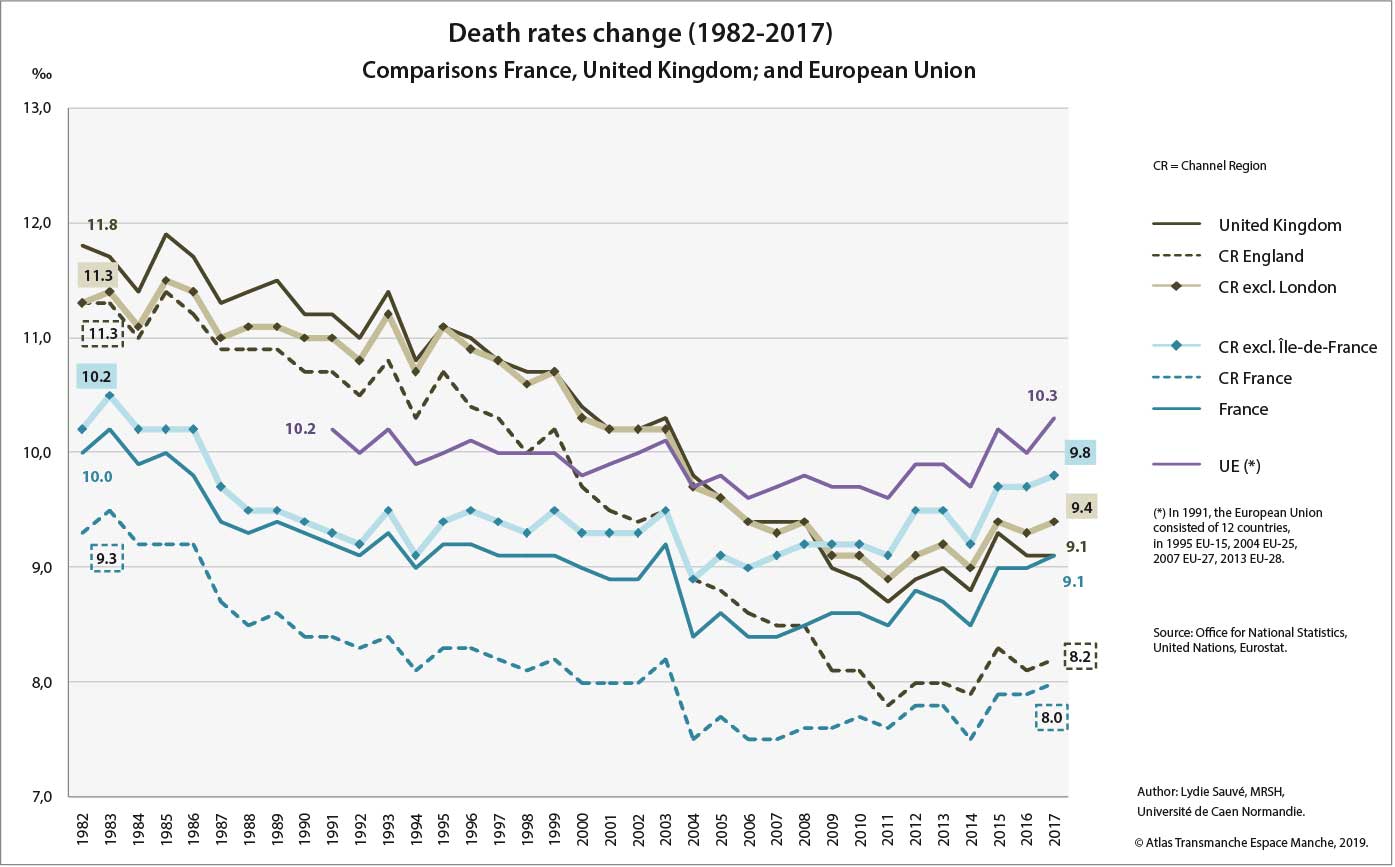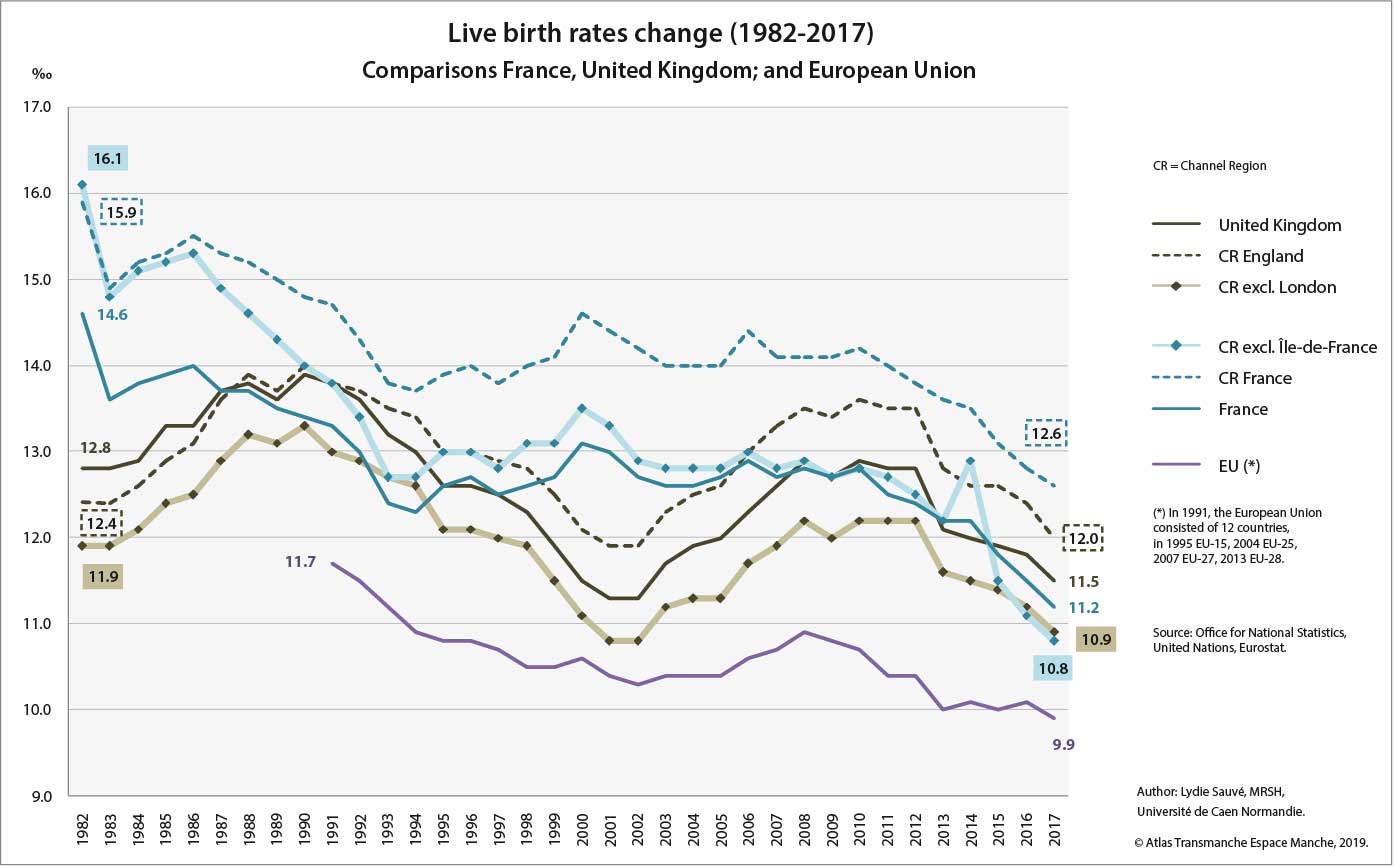

 Demographic indicators
Demographic indicatorsSince 1982, the crude birth rates in the Channel Region decreased. This is the case in most of European countries and, more generally, countries which have completed their demographic transition.
In 1982, the birth rate in the French Channel Region was at 15.9 live births per 1 000 population (16.1 excluded Ile-de-France Region). In 2017, it was at 10.8 (12.6 excluded Ile-de-France Region). On the English side, the birth rate decreased from 12.4 live births per 1 000 population (11.9 excluded London Region) in 1982 to 12.0 (10.9 excluded London Region) in 2017. Even so the decrease is less pronounced than in France; with some peaks in the late 1980’s and 2006-2012 and a marked drop in 1998-2001; for both spaces, the numbers of live births have continued to decline.
In the United Kingdom, in 1982 the Channel Region was below the national average (12.4 for 12.8‰). Since 1988, the rates are above it and attain 12.0 for 11.5‰ in 2017. Excluded London Region, the live birth rate of the well-known “Costa Geriatrica” are below the national average (11.9 for 12.4‰ in 1982 – 10.9 for 11.5‰ in 2017) confirming the ageing population of the area.
In France, over the period considered, the Channel Region is above the national average (15.9 for 14.6‰ in 1982 and 12.6 for 11.2‰ in 2017). However, excluded Ile-de-France Region, the three coastal regions known as a part of “fertile crescent” and well above the national average, began in 1986 to decline to approach the national average in the 2000’s. The live birth rates were for the first time below it in 2015 to reach their lowest rate in 2017 (10.8‰).
35 years later, the live births rates in the Channel Region are almost similar as well as the national averages. The decrease of live births is driven primarily by falling fertility rates, social, educational, and economic factors; but could be exaggerated by the ageing population where the proportion of older people compared with women of childbearing ages is increasing.

From 1982 to 2017, death rates in United Kingdom declined more rapidly than in France, (11.8 to 9.1‰ for UK; 10.0 to 9.1‰ for France). It is especially obvious for the English Channel Region (11.3 to 8.2‰), London has the lowest death rates of the country; as for birth rates, levels are identical or very close in 2017 (French Channel Region 9.3 to 8.0‰); both areas are under national averages.
Excluded London and Ile-de-France Regions, the death rates of English coastal regions were below the national average until 2008 but slightly above since 2009 (11.3 in 1982 to 9.4‰ in 2017). On the French side, death rates were above the national average, and since 2009 above English regions average (10.2 in 1982 to 9.8‰ in 2017). In 35 years, French coastal regions have the slowest decrease compared to the other areas.
Globally, death rates in the Channel Region have decreased from 1982 to 2011, even if they were numerous peaks and troughs due primarily to excess summer or winter deaths among elderly population (1983, 2003 heatwaves for example). After this period, with the exception of 2014; death rates started to increase again and reflect the ageing population which has a direct impact on mortality rates.
top














